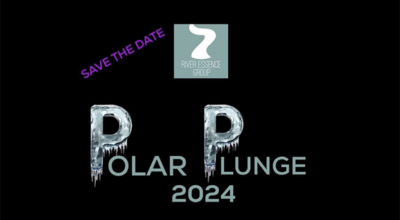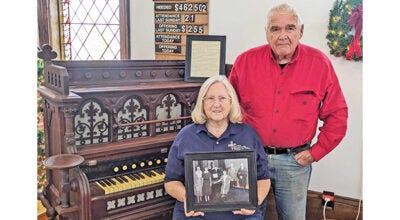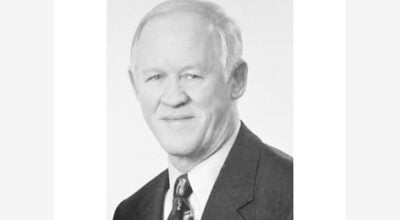The building blocks of fun
Published 9:18 am Thursday, June 5, 2014

In 2010, Renaissance Kids campers worked on the Whisper Dish at the Curious Kids’ Discovery Zone. (Submitted photo)
BERRIEN SPRINGS — “If you think of Brick, you say to Brick, ‘What do you want, Brick?’ And Brick says to you, ‘I like an Arch.’ … It’s important, you see, that you honor the material that you use.”
These words from famous architect Louis Kahn have stayed with Mark Moreno since he was a freshman architecture student in college.
“What do the materials want to be?” asked Moreno, now an associate professor of architecture at Andrews University and director of the Renaissance Kids Architecture Camp. “I liken that to the children. They also have aspirations, but they can’t achieve them without working with others — just as a brick can’t be an arch by itself. It needs other bricks.”
While the themes and projects have changed over the years at the Renaissance Kids Camp since 2008, the guiding ideas of collaboration and personal aspiration and have remained constant.
“We try to do something different every year and respond to challenges from parents,” Moreno said. “One of the parental challenges was that the kids build something ‘real.’ So, we built a sitting space outside of the School of Architecture.”
Moreno’s campers, who range in age from 5 to 15, have built a variety of beautiful and useful structures in collaboration with Moreno’s architecture students, as well as with artists from Water Street Glassworks and the Krasl Art Center.
“We now have five constructions we’ve built —three are on campus, and two are not. The sixth one will be built at the Krasl this year,” Moreno said. “Building something real has its challenges, but it’s great because the kids can count on being able to come back when they have kids and say, ‘I built that!’”
Their creations include a Whisper Dish at the Curious Kids’ Discovery Zone (2010), five masonry piers in front of the Curious Kids Museum on the bluff (2011), a fire pit with seven masonry piers at Andrews University (2012), and a stone wall and a bicycle rack, also at Andrews (2013).
This year, campers in each of the seven camp sessions will collaborate to create a sitting space along a pathway on the grounds of the Krasl Art Center in St. Joseph. For that reason, one of the camp sessions will be held at the Krasl, while the others will continue to meet on the Andrews campus in Berrien Springs.
“Julia Gourley, the executive director at the Krasl, asked me if we could help design the landscape there so that people would hang out on the grounds of the art museum more,” Moreno recalled.
“So, my students designed seven proposals for a master plan redesign of the grounds. As a result of their studies, the students noticed a pathway from State St. to the Krasl. One third-year student, Gian Penaredondo, designed and presented this proposal to Julia, and she loved it.”
While each camp group will work on an age-appropriate aspect of the project, the final construction of the sitting area will be left to the oldest campers, ages 12 to 15, who will attend the last session.
“We’ve been trying to get all of the kids in the camp to build a piece that will be incorporated into the design,” Moreno said. “Some will create and fire ceramic pieces—you’ll see those in the final design that we build.”
If all of these sound like rather unusual activities for a summer camp, that is because they are.
“I’ve been told that we are one of only five architecture camps like this in the country, so it’s relatively unique,” Moreno said.
Students also work on learning to draw things from different perspectives, and they will work with smaller materials to create additional projects.
“Basically, it’s a lot of hands-on, a lot of collaboration,” Moreno said. “We have thousands of materials to engage the kids creatively. We have miniature bricks and stones, and we have large LEGO blocks that they can build structures with that are so big that they can go inside them. In fact, we just had a donation of wooden sticks to build with. It’s a full camp. We try to pack in a lot.”
This year’s theme, “Design for All People,” is based on the curriculum that Moreno is teaching his college students.
“A lot of empathy goes into design, and the message I want the students and kids to get is that the Americans with Disabilities Act should not be back-burnered,” Moreno said. “So, we’ve got 10 wheelchairs, and the kids will be in wheelchairs for part of the week so they get an understanding of what that means.”
Moreno is also working on lining up mock clients whose needs must be considered when the campers are designing projects.
“At the end of the week, the kids will make a presentation to their families to show the things that they’ve designed,” Moreno said.
If this type of camp experience sounds like something your kids would benefit from, Moreno noted that there are still spaces available in many weeks of the camp.
More information and registration materials are available at www.renaissancekids.weebly.com, and the camp also has a Facebook page at www.facebook.com/renaissancekids.architecture. In addition, Professor Moreno can be reached at mmoreno@andrews.edu or at (269) 932-5055.





